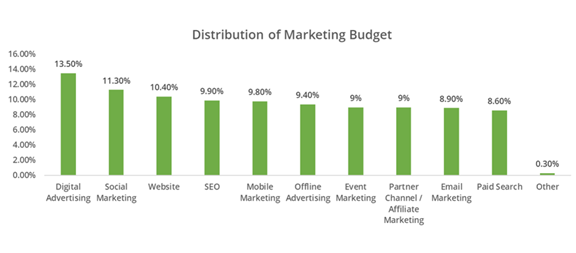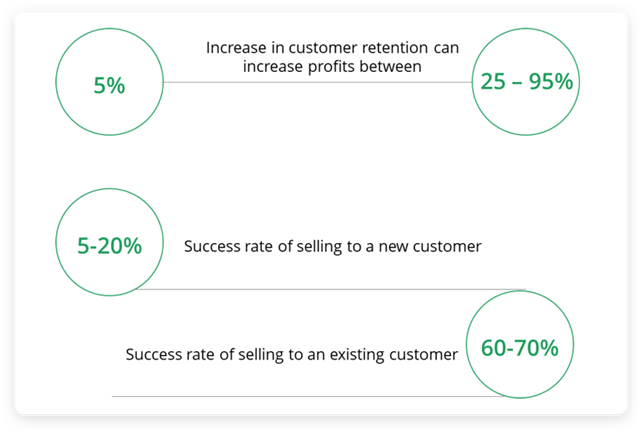Go beyond Acquisition –deepen relationships with the customers you already have!

Every Brand loves a new customer.
Take a look at how most marketing budgets are utilized.

Source: Gartner CMO Spend Survey 2020
Less than 9% of marketing budgets is allocated for marketing to existing customers (percentage of budget spent on Email Marketing in the above graph).
The growth of Facebook and Google (the big daddy channels for acquiring new customers or for generating leads)over the past decade clearly shows how obsessed marketers are with acquisition.

Source: Statista
Here is another statistic – this shows what marketing automation platforms or campaign management systemsare used for, by marketers. A whopping 61% of them use it for lead generation.

Source: Invespcro
As marketers, we all use analytics. But how many of us use analytics in our transaction portals vis-à-vis marketing portals and use the insights to market to our existing customers?
While a majority of marketers is obsessed only with acquisition and very little attention goes into marketing to existing customers, Marketing DOES NOT EQUAL acquisition. And while there is no doubt that new customer acquisition is the life blood of any organization, your existing customers are a gold mine.
There are several studies similar to the ones below that demonstrate the importance of marketing to existing customers.

Despite this, there are only a few industries such as SaaS and Telcos that inherently focus on metrics beyond acquisition such as Annual Recurring Revenue (ARR) and Average Revenue per User (ARPU) respectively.
It is very apparent that new customer acquisition alone won’t influence these metrics and brands in these industries naturally tend to market to existing customers.
Great and successful marketers in other industries inter-connect Acquisition, Renewal, Activation, Retention, Usage, Adoption, Profile Enrichment and many other goals to achieve marketing outcomes.
And while superficially it may seem like these objectives are de-focusing them from core revenue objectives, the truth is quite the opposite.
Each one of these metrics directly impacts or influences revenue.
First you define all the relevant customer life-stages for your brand and map a possible list of recommendations that can be made to each customer at each juncture. Find the most relevant and lucrative of those recommendations and set it in motion. Ensure that each one is driven by customer needs – and not business pressure.
Free Download – Customer Journey Optimization
How effective is your campaign management strategy? We would love to hear about what works for you and what doesn’t. Write to us at marketingfolks@xerago.com
- Industry
- Art
- Causes
- Crafts
- Dance
- Drinks
- Film
- Fitness
- Food
- Games
- Gardening
- Health
- Home
- Literature
- Music
- Networking
- Other
- Party
- Religion
- Shopping
- Sports
- Theater
- Wellness
- News


